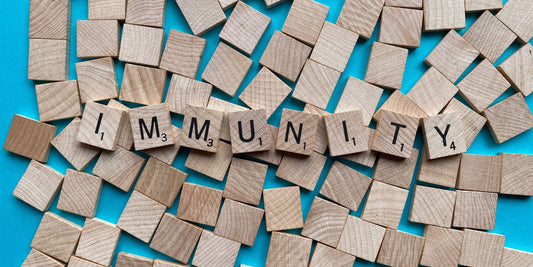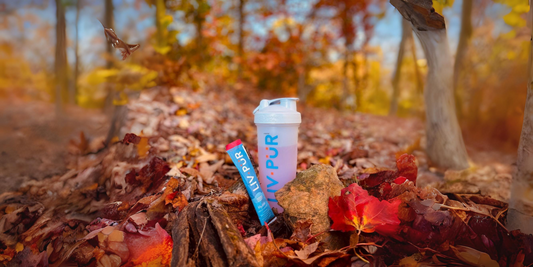A day to gather and give gratitude, Thanksgiving has been a tradition in the United States for a few hundred years.
Today, it’s perhaps the most notorious meal hundreds of millions of Americans eat every year. While many iconic Thanksgiving foods might not help us meet our fitness goals, there are plenty of ways to avoid getting completely knocked off track.
Keep reading to get a brief history of Thanksgiving, as well as the best foods to pile on your plate.
When is Thanksgiving 2023?
In the United States, Thanksgiving is always held on the fourth Thursday of November. Thanksgiving 2023 takes place on Thursday, November 23rd.
A Brief History of Thanksgiving
Thanks to members of the Abenaki, Pawtuxet, and Wampanoag tribes, a small group of English colonists (Pilgrims) enjoyed their first successful corn harvest in the fall of 1621. They had arrived in modern-day Massachusetts just over a year before, but half of them did not survive due to various diseases as well as exposure to the cold.
The English survivors and their Native American allies celebrated the happy harvest with a three-day festival, and that was the first Thanksgiving.
However, a celebration of gratitude, including a large feast, was already an established Wampanoag tradition long before the colonists’ arrival. Not to mention, the century before, Spanish voyagers hosted a similar celebration in St. Augustine, Florida with members of the Timucua tribe.
In short, Thanksgiving is likely a Native American tradition picked up and adapted by colonists.
No matter who came up with it, this story stands out as one of the few instances where Native Americans and colonists formed a peaceful alliance. The Pilgrims and the Wampanoag would continue to enjoy such a relationship for decades after.
As for the food, those early Thanksgiving meals probably looked a lot different than ours do now. In addition to the lobster New England is famous for, Pilgrims were known to eat seals and swans.

Load Your Plate with These Nutrient-Dense Thanksgiving Foods
Thankfully, roast swan is no longer on the menu. But if you want to know which modern Thanksgiving dishes are actually pretty good for you, pick up a portion of these.
Butternut squash.
This fall staple is relatively low in calories, but high in satiating fiber. It’s a decent source of vitamin B6 and magnesium, and an excellent source of vitamin C. Try yours stuffed with quinoa, cranberries, and pecans for even more fiber and nutrients.
Pumpkin pie.
The pumpkin puree for our Thanksgiving pies is loaded with vitamin A, a powerhouse nutrient for immune support and eye health. It’s also a good source of iron, with one cup providing nearly 20% of your RDV.
Make pumpkin pie healthier than you remember by sweetening it naturally and swapping out the condensed milk.
Roast turkey.
The trendy method of deep frying a whole bird isn’t doing anyone any favors, least of all the local fire department. If you’re eating meat this Thanksgiving, roast it the old-fashioned way. You’ll be cutting the fat but getting all of the muscle-building protein.
It’s also a good idea to check the turkey’s packaging when you buy. Some brands have taken to adding artificial flavors and colors to their birds.
Sweet potatoes.
Vitamin A, vitamin C, and manganese are on the menu when you include sweet potatoes, as well as plenty of other free radical-fighting antioxidant nutrients.
It’s just probably best that you don’t drown them in refined sugar and marshmallows. Instead, try them mashed with a crumbly topping including pumpkin seeds and dates.
Brussels sprouts.
Of course, veggies are good any day of the year, but Brussels sprouts are among the very best. This cruciferous vegetable is high in vitamin K, which has many benefits for our bones and blood. They’re also high in vitamin C and fiber.
Try them roasted with garlic and tossed with balsamic vinegar for a tasty yet sophisticated take on this oft-overlooked veg.

Thanksgiving Tips for Beating the Bloat
A day of eating to excess is enough to leave anyone half-conscious on the couch. If you’re trying to avoid the heavy, overstuffed feeling many experience on (and even days after) Thanksgiving, try this.
Get moving.
Feel like lying down? Resist the urge; all this does is keep the food sitting right where it’s at. A leisurely walk around the block will help stimulate healthy digestion. It’s also a brief escape from bickering relatives.
If you really, truly cannot bring yourself to stay upright, massage your abdomen to get things going manually.
Eat more slowly.
If you’ve been skipping meals in anticipation of the big show, you’re probably really hungry, and this may increase the speed at which you fork in those bites. When you eat quickly, you’re swallowing air, which increases bloating.
Take smaller bites and chew thoroughly before swallowing. More chewing makes food easier to digest and widens the gap between bites.
Boost hydration.
There’s a good chance your Thanksgiving meal contains more sodium than you usually eat. In some cases, this can lead to bloating through fluid retention. A big glass of water can help balance things by thinning out the amount of sodium in your blood.
Of course, if you’re having some festive cocktails with Thanksgiving dinner, you’re probably losing fluid, not retaining. If this is the case, knock back a hydration drink with electrolytes and other nutrients to replace it.
After all, you don’t want to wake up on Black Friday with a hangover from heavy food and drink.
Happy Thanksgiving from LivPur Nutrition
Come for the food but stay for the gratitude. Togetherness and sharing have always been at the core of Thanksgiving.
This year, we thank you for your support, and look forward to continuing to share simple yet innovative solutions to your fitness-related concerns, from hydration and energy to post-workout recovery.
Happy Thanksgiving!




